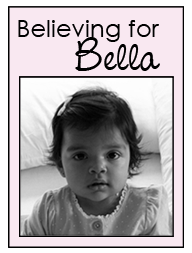In my quick guide to IEP season (The Crazy Season), I mentioned putting together a powerpoint presentation of your child to personalize the proceedings. This idea is catching on elsewhere, so I thought I'd talk about it a little more for folks who may be going into meetings, or expecting to, and feeling overwhelmed.
If you are feeling totally out of control, or uncomfortable about your school folks, or just crazy-crazy, a good thing to do is to step back, take a deep breath, and create a reminder of what the focus of this meeting ought to be: your child. How well do the school personnel really know your child? What information do they need to plan and prepare an appropriate program for your child? Who is this child, and what does the child really need? What do you, as the parent, expect?
What we did is put together a powerpoint presentation. If you are not familiar with powerpoint, don't panic, it is a very easy program. It's word processing for slide shows. We set ours up so that each slide had bullet-point information about Joey on one side, a photo of Joey on the other, and we alternated which side was which for visual interest. You can plunk short video into it, too, instead of a photo. We only did this once, but I'll get to that in a minute.
In our slide show, we wanted to emphasize Joey as a human being, as a child with potential, and as the focus of the program being discussed. We were entering a new school, with an almost entirely new staff, and we wanted to communicate to these new people the importance of what we were doing in planning Joey's kindergarden program. With this in mind, we asked ourselves first and foremost: Who is Joey?
This Question sets the tone for the presentation. This isn't about being sappy, this is about humanizing a process that is very apt to dehumanizing and bureaucratizing. We selected a photo of Joey and made two clear statements of Joey: Joey is our bright, cheerful, loving son and Joey is a caring and helpful older brother. We wanted to encapsulate Joey's personality and position in just a few easy-to-read statements. Bullet points break things down for clarity, give your viewer a clear list. Keep it simple, but pack it. Every word counts.
Next, we listed things Joey likes. This information is helpful in keeping the presentation positive and providing information about motivators and frame-of-reference. You can get a lot more done with Joey if you understand that he loves Little Bear and the color blue. We put a simple one-slide list paired with a photo of a "like" that we didn't directly list. Then we used a second slide to list the TV shows and Movies that were most important to understanding Joey and his speech (Joey often quotes these shows when trying to form language and communicate). Next, we added a slide of Joey's favorite stories. Again, this provides a frame-of-reference for the teachers; they can familiarize themselves with a short list of narratives your child is particularly attached to, then use this information to facilitate communication and motivation.
Now that there is a clear idea of what Joey likes, we went straight into Joey's strengths. Again, we wanted to keep the presentation positive. If your child has very strong dislikes that you think need to be clear and addressed, go ahead and put those in; but it might be a good idea to include problems (especially sensory issues) with another section addressing issues.
We dedicated three slides to strengths. Two were strengths we knew about and had documented. Then we put in a slide about strengths noted by his therapists. This lets the teachers know Joey has therapists, and things that might not have been observed at home. We then listed the latest successes (at the time, potty training, fetching items from another room, and learning ASL were important successes to note for Joey).
Instead of countering all this positive information with something like "weaknesses" or "issues", we chose to label the next section "challenges." Now we were getting into the meat and potatoes of what teachers wanted to talk about. IEP meetings seem inherently negative, because the discussion focuses on weaknesses and what will be done to shore up skills and get the child progressing. Progress itself seems to fall to the wayside. However, it is important to show that you are familiar with your child's challenges, and state what you think needs to be addressed. We had one slide of challenges we wanted addressed, then one slide of challenges noted by his therapists. This gives some authority to your presentation: these aren't just things you're paranoid about, but rather these are things noted by an independent source as problematic.
This is where we put our short video, so the teacher could get a sense of the behaviors Joey manifests- particularly the tracking and clicking. Explaining tracking to someone can be a little difficult if they have never seen it.
Continuing the challenges theme, we then noted the concerns raised by the various evaluations we had of Joey. We did as full a set as we could get anyone to do on Joey before he entered kindergarden, trying to get a baseline. Why people won't just do a full work-up on a child I don't know; but we did the best we could, and then noted all the concerns in the powerpoint. Again, this gives the teachers something to work with, but also makes it clear you know where your child stands and what s/he needs. Knowing what to ask for is a huge part of the IEP battle.
We divided the concerns into different slides based on the field: PT, OT, Speech. Then we did a slide just of other concerns we felt needed to be addressed- things we had noticed needed attention, things that Andy could do, but Joey still couldn't, etc. this is slightly different from "challenges." Our "Challenges" section included things like "Being able to create a sentence", "maintaining interaction with peers", etc. This "Concerns" section was more specific: "Ability to take turns", "Ability to recognize consonant sounds", "unable to roll out playdoh."
We concluded our presentation with "Our Goals and Dreams for Joey." This is an important slide, don't neglect it. Teachers are thinking of IEPs in terms of year-to-year. Our job as parents is to have a bigger picture in mind, a long-term vision of where we think the child can go, what s/he can achieve. Let the school personnel know what you are expecting in the long term. Be ambitious, but realistic. We want Joey to eventually be able to continue his education if he so chooses. We want him to be able to self-advocate. We want him prepared to function as an autistic individual in a non-autistic world. We want him to be able to participate in an inclusion setting with (and eventually without) a paraprofessional. Make it clear: my child is a human being, and I want my child to participate in society. With Joey, these long-term goals are certainly reasonable.
One tip: use positive photographs, even in the "challenges" sections. Make sure the child's face is seen often and as clearly as possible. Emphasize the human-ness and reality of your child. The negatives will tend to emphasize themselves, but often no-disabled people have trouble seeing disabled people in a positive manner, so use the power of this visual to emphasize the positive- especially when you are talking about things that seem negative.
The good part about making the powerpoint is it gets you organized in your head. You get a nice, clear picture of your child's strengths and challenges, and what you want the school to do about it. You clarify your expectations- not just for them, but for you. "This is where we are. This is where we want to go. This is what is getting in our way." But most importantly, you clarify that your child is a child like all children, that disability is not dehumanizing. This is a human being who needs support. If you provide that support, we can achieve these long-term goals.
Subscribe to:
Post Comments (Atom)




















6 comments:
You know I think this is a great idea. It also shows that you care and are a thoughtful parent who is involved with your child. I've found that people appreciate that as well.
This is terrific!
PowerPoint. What an awesome idea.
We did much of this in a low-tech way this year: a bullet-point list that introduced our daughter Joy, her strengths, her likes & dislikes. We also brought a framed photo of her to the meeting, a shot where she was riding the carousel at the zoo and simply RADIATING delight. But a PowerPoint would provide room for lots more photos!
Our bullet-list was included in the actual IEP document, by the way, in the "present level" section. Did you do that with your PowerPoint bullets too?
Thanks for the food for thought!
What a cool idea, and thanks for blogging about it! I hope many other people, especially those who are new to the IEP thing snd need all the help they can get, will find this post and use some of your advice!
What a fantastic idea! Thank you so much for sharing this idea. I think I may try it if we can get a meeting about getting Gus PT.
This is incredible - at our first IEP meeting just last week I was totally ill-prepared & overwhelmed....something like this would have been just the ticket. I will definitely keep this handy little idea in my back pocket! thanks!
Post a Comment